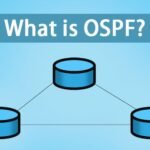Have you ever opened your phone’s storage or seen a log file showing something like:
content://cz.mobilesoft.appblock.fileprovider/cache/blank.htmlAt first glance, it can feel confusing—maybe even a bit scary. I remember the first time I spotted it in my phone’s storage; I thought, “Wait… is this malware?”
The good news? It’s usually harmless. This file is linked to the AppBlock app, a productivity tool that helps block distracting apps and websites. It’s part of the app’s internal process and not something dangerous lurking on your phone.
What Is content://cz.mobilesoft.appblock.fileprovider/cache/blank.html?
Let’s break it down in plain English:
- content:// → This is an Android Content URI, a path Android apps use to access files safely.
- cz.mobilesoft.appblock → This is the package name of the AppBlock app.
- fileprovider/cache/blank.html → This is a temporary blank HTML file stored in the app’s cache folder.
So, all together, this long string is just a safe, temporary file created by AppBlock.
Is this a virus or malware?
A: Nope! This file is harmless. AppBlock generates it when it blocks content—think of it like a digital “Do Not Disturb” sign for websites or notifications.
Why Does AppBlock Create blank.html in Its Cache?
If you’re using AppBlock to stay productive, you’ve probably noticed that it blocks certain apps, notifications, or even websites. But how does it do that behind the scenes?
Here’s the trick: AppBlock uses a “blank” web page as a placeholder whenever it blocks content. Instead of letting a distracting page or notification load, it quietly serves you a tiny file called blank.html. This is why you’ll see that long URI pop up in logs or storage.
I like to think of it as AppBlock putting a whiteboard in front of a distracting window. The window is still there (the app or website), but all you see is the blank whiteboard—keeping your focus intact.
Why do I keep seeing this file in my logs or storage?
A: Every time AppBlock intercepts a notification or web request, it uses blank.html as a placeholder. If you use the app often, it might appear repeatedly in your storage or activity logs.
Is It Safe to Keep content://cz.mobilesoft.appblock.fileprovider/cache/blank.html?
If you’ve spotted this file and felt a twinge of worry, don’t stress—it’s completely safe to keep. Let me explain why in simple terms.
This file is just a temporary placeholder created by the AppBlock app. It’s not an executable program, it can’t harm your phone, and it doesn’t collect your personal data. Android uses something called a FileProvider to safely share files within apps, and blank.html is part of that process.
When I first noticed it on my own phone, I did what most of us would do—I Googled it, checked antivirus apps, and even cleared the cache. Nothing bad happened because there was nothing malicious there to begin with.
Can this file steal my information or infect my phone?
A: No. It’s just a blank web page used by AppBlock to silently block distracting content. If you downloaded AppBlock from the official Google Play Store, it’s safe.
How to Clear or Manage the blank.html Cache
Even though this file is harmless, some of us just don’t like seeing random files or logs on our phones. The good news? It’s easy to clear.
Here’s the quick, step‑by‑step way to manage or remove it:
- Open Settings on your Android phone.
- Go to Apps → AppBlock (sometimes under “Manage Apps”).
- Tap Storage & Cache.
- Select Clear Cache to remove temporary files, including blank.html.
- Optional: Restart your phone for a clean refresh.
Personal Tip: I cleared it once, and it reappeared the next day—because AppBlock blocked another notification. That’s completely normal.
Will clearing the cache break AppBlock or my block lists?
A: No. Clearing the cache only deletes temporary files. Your block settings and app data remain safe.
(If you choose “Clear Data,” that will reset your settings.)
Expert Tips for Managing AppBlock and Cached Files
Now that you know what content://cz.mobilesoft.appblock.fileprovider/cache/blank.html is, here are a few pro tips to keep your phone content:
- Stick to official downloads:
Always download AppBlock from the Google Play Store. Third‑party APKs can be risky. - Clear cache occasionally:
Once every week or two, clearing AppBlock’s cache can keep your storage tidy without affecting your settings. - Use storage management tools:
Android’s built-in “Storage” feature or trusted cleaner apps can help automatically remove leftover cache files. - Don’t panic over harmless files:
Seeing these placeholders is just a sign that AppBlock is actively blocking distractions, not a sign of malware.
What if I see multiple blank.html files piling up?
A: That just means AppBlock has blocked multiple requests. Clearing the cache will remove them all at once.
Quick Troubleshooting Checklist
Here’s a simple table to handle common scenarios:
| Symptom | Action |
| blank.html appears in logs | Ignore it—it’s safe. |
| Cache folder filling up | Clear AppBlock cache via Settings → Storage. |
| Concern about security | Verify AppBlock from Play Store & scan device. |
| File reappears after clearing | Normal behavior—AppBlock created it again. |
Key Takeaway:
content://cz.mobilesoft.appblock.fileprovider/cache/blank.html is not a virus or threat. It’s a harmless, temporary file AppBlock uses to keep your focus intact. With a bit of cache management and awareness, you can keep your phone clean and your mind at ease.



